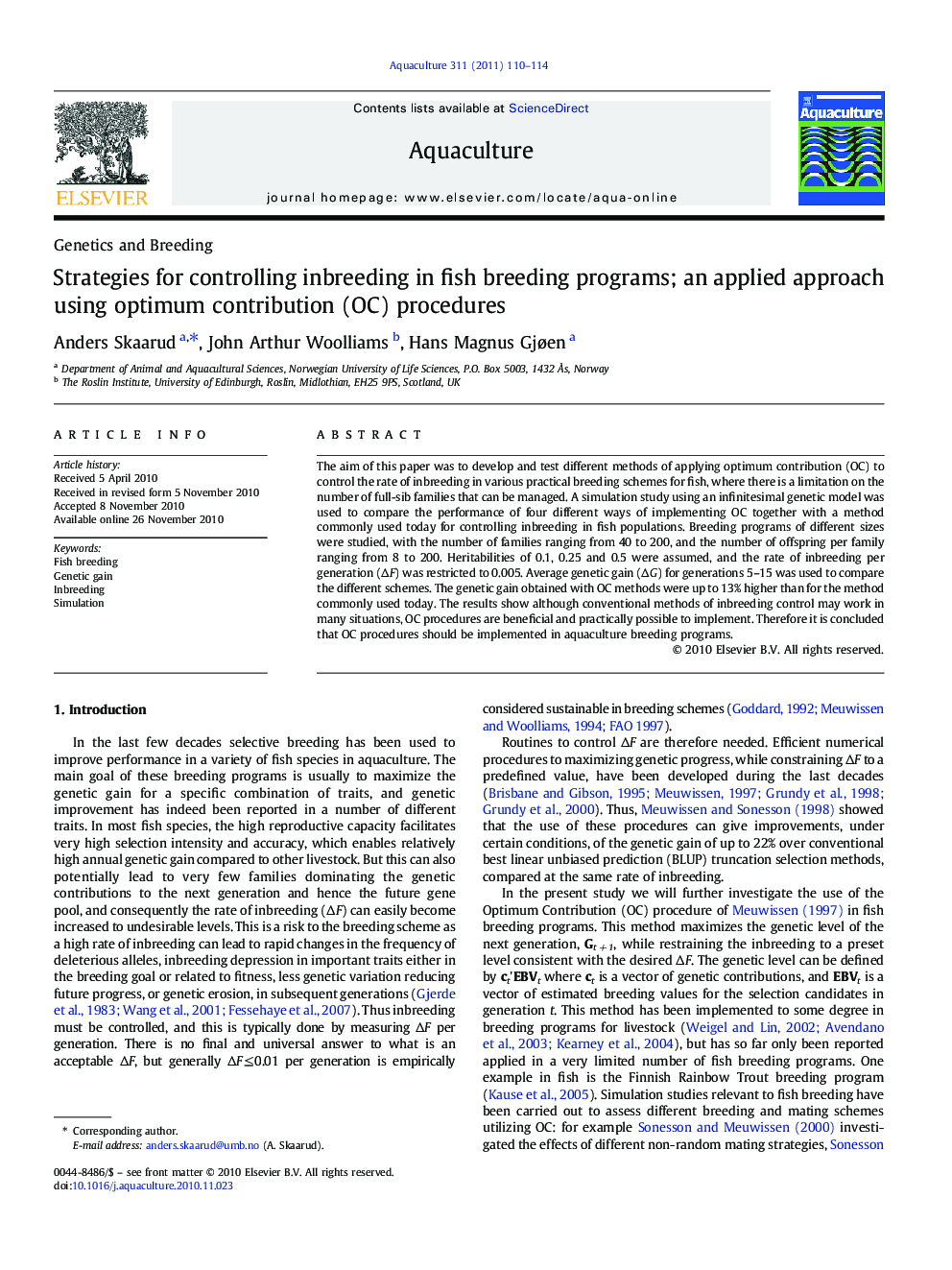| کد مقاله | کد نشریه | سال انتشار | مقاله انگلیسی | نسخه تمام متن |
|---|---|---|---|---|
| 8496001 | 1552914 | 2011 | 5 صفحه PDF | دانلود رایگان |
عنوان انگلیسی مقاله ISI
Strategies for controlling inbreeding in fish breeding programs; an applied approach using optimum contribution (OC) procedures
دانلود مقاله + سفارش ترجمه
دانلود مقاله ISI انگلیسی
رایگان برای ایرانیان
کلمات کلیدی
موضوعات مرتبط
علوم زیستی و بیوفناوری
علوم کشاورزی و بیولوژیک
علوم آبزیان
پیش نمایش صفحه اول مقاله

چکیده انگلیسی
The aim of this paper was to develop and test different methods of applying optimum contribution (OC) to control the rate of inbreeding in various practical breeding schemes for fish, where there is a limitation on the number of full-sib families that can be managed. A simulation study using an infinitesimal genetic model was used to compare the performance of four different ways of implementing OC together with a method commonly used today for controlling inbreeding in fish populations. Breeding programs of different sizes were studied, with the number of families ranging from 40 to 200, and the number of offspring per family ranging from 8 to 200. Heritabilities of 0.1, 0.25 and 0.5 were assumed, and the rate of inbreeding per generation (ÎF) was restricted to 0.005. Average genetic gain (ÎG) for generations 5-15 was used to compare the different schemes. The genetic gain obtained with OC methods were up to 13% higher than for the method commonly used today. The results show although conventional methods of inbreeding control may work in many situations, OC procedures are beneficial and practically possible to implement. Therefore it is concluded that OC procedures should be implemented in aquaculture breeding programs.
ناشر
Database: Elsevier - ScienceDirect (ساینس دایرکت)
Journal: Aquaculture - Volume 311, Issues 1â4, 3 February 2011, Pages 110-114
Journal: Aquaculture - Volume 311, Issues 1â4, 3 February 2011, Pages 110-114
نویسندگان
Anders Skaarud, John Arthur Woolliams, Hans Magnus Gjøen,